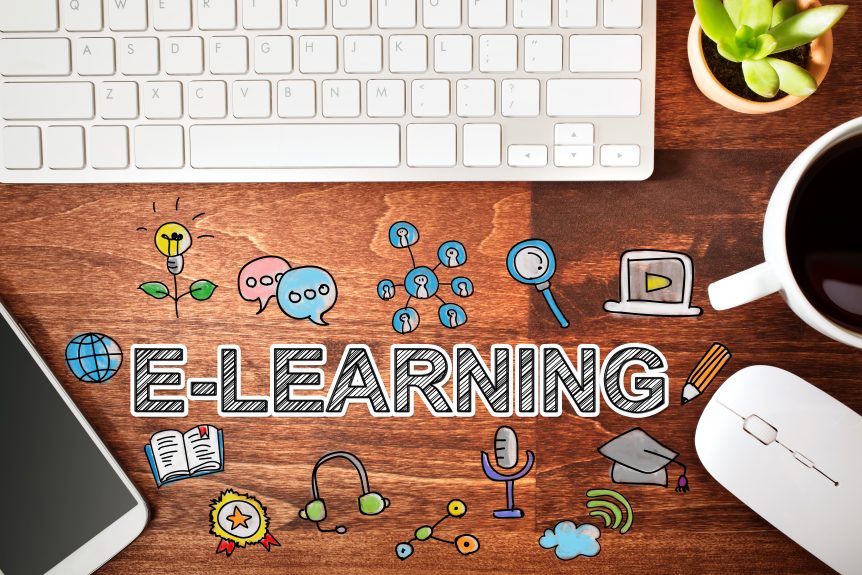9 Tips for Using Images in Your E-Learning Courses
Images and visuals make your e-learning courses more engaging and relevant, plus they are excellent learning tools. It’s important you use images properly, however, to ensure you don’t include them in your e-learning courses just for the sake of including them.
The following nine tips will ensure the images in your e-learning courses enhance the learning experience.
1. Use Custom Images Over Stock Images Where Possible
Stock images are very useful in a range of different situations and for many types of e-learning course. In fact, there are likely to be stock images in all the e-learning courses you create or have developed.
However, don’t make the use of stock images your default position. Instead, you should also check if there is a custom image in your library that is suitable for the situation, or whether you can create an image.
This will make the image or visual more relevant to learners and more closely connected to your brand. Custom images also make your e-learning courses more unique.
2. Make Images as Relevant as Possible
Whether you use custom or stock images, the image should be as relevant to the learner as possible. They should be familiar with what the image is depicting, and they should understand what the image represents.
This is particularly important when you have learners in different localities as localising your e-learning courses is always beneficial. Making images relevant to learners in their locality is one way of doing this.
3. Replace Text with Images
Don’t just use images in your e-learning courses to fill space or as decoration. The images and visuals you use will have a much greater impact if they have a purpose. One of the best ways of doing this is to replace text with images.
The old saying of a picture being worth a thousand words is often repeated, but it is still relevant in e-learning.
4. Match the Image to the Text
Matching the image or visual you use to the text on the page is important too. This ensures a consistent and flowing learning experience. It also helps ensure the image is relevant.
In addition, learners take in new concepts and information better when they are presented with both text and a relevant image.
5. Ensure the Images You Use Are High-Quality
It is essential all the images you include in your e-learning courses are high-quality. Make sure the lighting is good, the image is clear, and it is framed professionally.
It is usually also good to avoid images that are overtly staged, cliché, or overly corny.
6. Make Sure the Image is Not a Distraction
When images are used on a page for the sake of having an image, the result can sometimes be distracting for the learner. This damages the learning experience and can even impact engagement rates.
Therefore, make sure all the images you use enhance the quality of your e-learning course and improve the learning experience.
7. Use a Consistent Image Format
This tip particularly applies when you are creating graphics, infographics, charts, and diagrams. They should all have a consistent format and design to ensure there is a good flow throughout the e-learning course.
This includes everything from the backgrounds used to the fonts, colours, and overall style.
This doesn’t mean all the images need to look the same, however. You can still make all your images unique while maintaining consistency.
8. Make Sure Your Branding Shines Through
You should ensure, where possible, that the images in your e-learning courses contain your branding. After all, you should use your branding at every opportunity you get, including in e-learning courses.
9. Size Is Important
The people going through your e-learning course are likely to access it online. They are also likely to use a variety of different devices. Together, this makes the size of your images very important.
This includes the dimensions of your image as well as the file size. In general terms, the file size should be as small as possible. This will minimise the time it takes for the image to load on the screen, improving the learning experience.
In terms of dimensions, they should be optimised for the device that learners are most likely to use.
You should also consider details and any writing that is on images, particularly if learners will be using mobile devices to complete the course. Will the writing be big enough and the details clear enough for learners to see, read, and/or understand? After all, you don’t want to go to the trouble of creating an image that should be a useful learning tool, but which fails because the learner can’t properly see it.
Bonus Tip
Our bonus tip to help you optimise the use of images in your e-learning courses is to spend adequate time on choosing, creating, and optimising image content. This time will be paid back considerably as you will have an e-learning course that learners will enjoy completing, that will deliver on your objectives, and that maximises knowledge retention.
